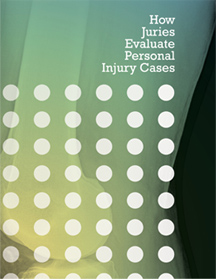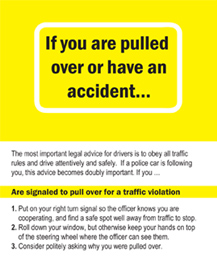Physical evidence in slip and fall cases
If you were injured in a slip and fall accident and you have filed, or are considering filing, a personal injury lawsuit, you and your attorney must take care in gathering and preserving the physical evidence. Your slip and fall case can be lost if the physical evidence is lost or destroyed or, as often happens, there is no attempt made to retain the physical evidence.
Shoes worn at the time of the slip and fall
Sometimes a failure to retain evidence results from something as simple as continuing to wear the shoes you were wearing at the time of the accident or discarding those shoes. Your personal injury attorney may be able to secure an exemplar pair of shoes of the same manufacturer, size and style, but if not, then significant problems may arise. In most cases, the burden is on the defendant (the property owner or occupier) to provide a safe floor for individuals wearing commonly encountered shoe materials. If testing of the floor surface shows the defendant failed to meet that burden, then proof of that breach of duty is relatively easy. However, when the floor surface is marginal, the composition of your shoes may be critical to determine whether a slipping hazard existed at the time of the slip and fall. Analysis or evaluation of the shoes may be necessary to resolve the issue.
Floor mats
Large floor mats are bulky, often dirty, and are difficult to store. Because of this, they are often discarded by the defendant’s employees. In discarding this evidence, the employees deny all the parties to the lawsuit the opportunity to examine, test and evaluate this essential piece of evidence related to the cause of the slip and fall accident.
Perishable evidence
Some evidence is perishable, such as lettuce leaves or grapes on the floor of a market. The fact that you do not have the actual piece of produce is not, however, fatal to your case. The effect of lettuce or grapes on the floor is relatively uniform, with no significant difference between the size and type of produce.
Clothing
If, in your case, the slip and fall occurred as a result of liquid or other debris on the floor, analysis or inspection of your clothing may reveal what the foreign substance is and, possibly, the source of the hazard. The clothing can confirm the hazard’s existence and the mechanics of the fall. This evidence will be lost, however, if the clothing is washed or discarded.
Debris or other foreign material
A slip and fall on produce or other foreign material in a supermarket or store is common. It is less common, though, for the injured party to save the material that caused the slip and fall. While it is difficult to analyze dried vegetable material, it is not impossible to identify the debris by microscopic or chemical examination. When the origin of the hazard is at issue, this may be very important evidence. When the material has not been retained, your injury lawyer should ask you about the size, color, texture and appearance of the material. A thorough description of the debris or stain is helpful in establishing the condition of the floor and the magnitude of the hazard. Specific descriptions are best. General descriptive words such as “greasy,” “dirty” or “shiny” are helpful, but do not describe the conditions adequately for identification.
What you and your injury attorney can do to preserve the physical evidence
Proper evidence storage
During your initial interview with your personal injury attorney, he or she should take possession of any physical evidence, including the shoes you were wearing at the time of the slip and fall, any stained clothing, and any other tangible evidence of the defect, hazard or contamination. Your attorney should place your shoes, stained clothing and other similar evidence into a plastic bag and then place the bag in a sturdy cardboard box with a lid, to prevent drying and contamination. Everything (each shoe, each bag, each box) should be clearly labeled and identified. This type of physical evidence must always be preserved in order to corroborate or rule out various causes of the slip and fall.
In addition, your personal injury attorney should formally place the defendant on notice not to destroy, alter, lose or mutilate any physical evidence (e.g., a floor mat), without advance notice to your attorney.
Photographs
No matter how attentive or articulate you may be, you probably cannot describe the scene of the slip and fall as effectively as a photograph. To be admissible at trial, any photographs must accurately depict the location of the slip and fall as it appeared on the day of the accident. Therefore, as soon as possible after first meeting with you about the case (or, even better, before this initial face-to-face meeting), your injury attorney should send a photographer to the scene of the slip and fall to fully document the conditions and features of the area. Several different angles of the scene will ensure that there is no confusion as to the location of the slip and fall. The photographs should be taken so that architectural or other physical features of the premises are shown in the background, to enable a reliable orientation and foundation of the premises. All photographs should be taken in color. If your slip and fall accident occurred on a stairway, at least one photograph should depict the view in the direction you were traveling at the time of the slip and fall.
Measurements
Physical measurements of the accident site are important in most slip and fall cases and in every case where repairs or alterations are likely to occur in the immediate future. Changes in elevation of walkways, such as risers, broken sections, holes, cracks or depressions, should be measured and documented as soon as possible. By the time an expert is retained, it may be too late. A competent investigator can take the necessary dimensional measurements and testify to those measurements at trial, if necessary. The expert will ultimately repeat the measurements, probably in more detail. However, if there have been changes prior to an examination, the expert can use the prior data as a basis for an opinion. The measurements should be detailed enough to create a scale drawing of the accident site, and should be specific enough to assist you in pinpointing the exact location of the slip and fall event.



